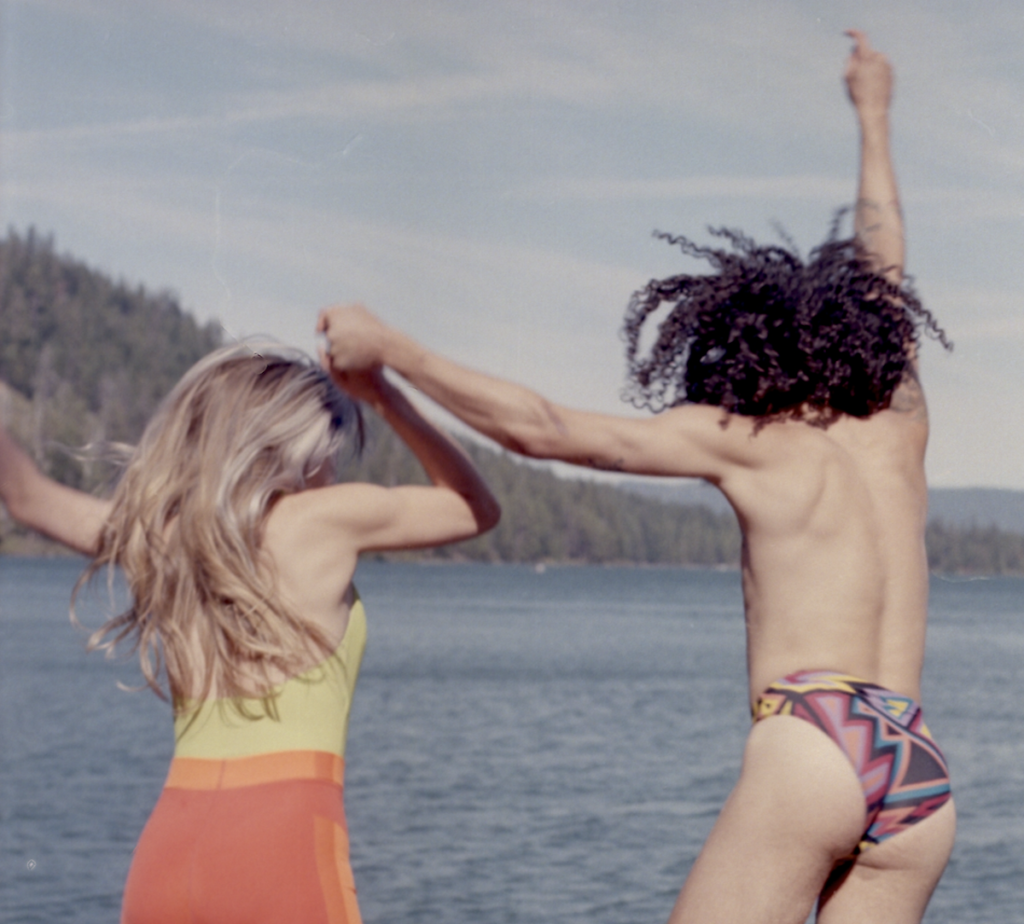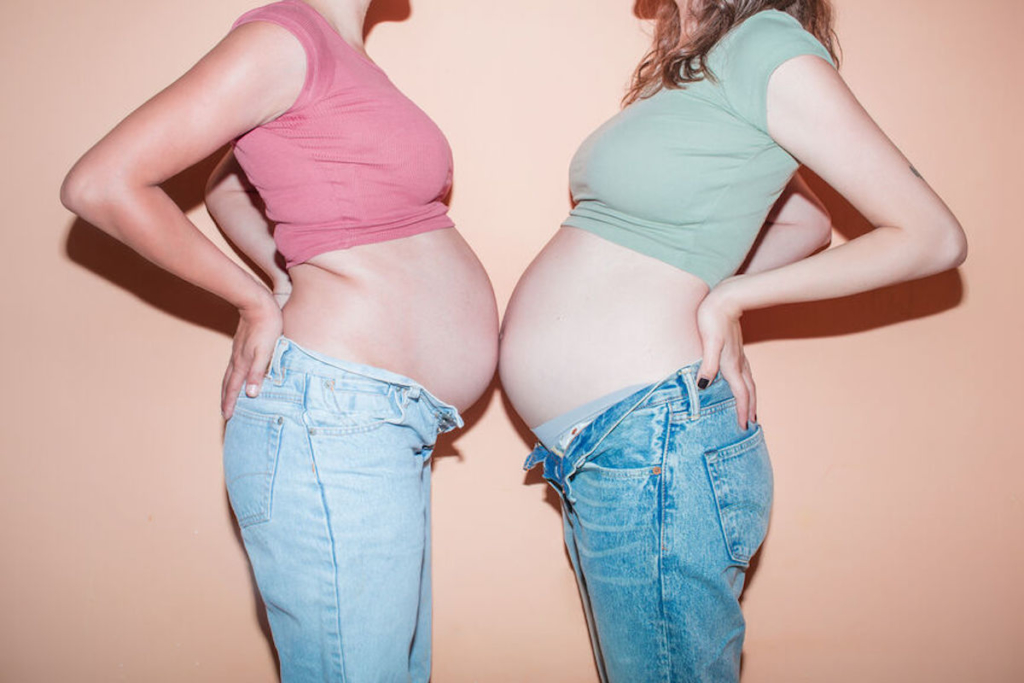
As sustainability becomes an increasingly trendy topic, we found it long overdue that we haven’t spoken about “clean beauty,” and how to ensure the products you’re using aren’t harmful to you or the environment. To get all the dirty details, we spoke with Tim Hollinger, Co-Founder and CEO of Bathing Culture, a sustainable, biodegradable, non-toxic bathing company (who, might I add, just recently launched refill systems for their beautiful soap!). Get the true definition of clean beauty, learn the ingredients to avoid, and learn more about how toxic ingredients can pollute our water system, below. If you’re interested in shopping, use our link or code THECHILLTIMES for 10% off.
What made you second guess what was in body and bath products you used?
It was totally a silver lining moment. This awful thing happened, and I was like, “Okay, we’ve got to do something about this to help change the status quo. Let’s look at where we, as pretty simple everyday folks, can have an impact.” It turns out that was in the shower.
That wakeup call was the deepwater horizon oil spill in 2011. It was this hypnotic national event where billions of gallons of crude oil were gushing into the ocean every day. You could watch it on a webcam, but no one could figure out how to stop this gaping wound in the earth. Dolphins, tuna, turtles, and migrating birds, were all wading through this prehistoric goop which we’d unleashed with no way to stop, and it just kept coming. At one point during the months that the spill continued, I read that the borehole was gushing the equivalent of 4% of the oil that gets used in the US every day; the article went on to explain that this is the same amount that goes into personal care products. I looked at the ingredients in my body wash and had this total “oh f*ck” moment. I’d taken so much for granted.
It got me wondering why and how it was cheaper to make these products from fossil fuels that were thousands of years old and miles underground, and which are linked to all of these climate and health problems, versus using plants that were grown just this year and are good for personal and planetary health, which people have been using for thousands of years without major personal and planetary harm.
Turns out it’s a false dichotomy. Up front, it’s cheaper to dig a well and siphon out crude oil than it is to pay farmers to grow crops. But the long term costs of fossil fuels are incalculably high. In fact, crude oil is one of the leading causes of the current environmental crisis. Without massive action, the IPCC (the non-partisan scientific panel of 195 climate scientists), has declared huge swaths of the world will be uninhabitable in the next 25 years. It’s hard to even fathom the price of that, and here we are using this stuff for our personal care products, when there’s already a perfectly good alternative?! It’s madness.
To this day, personal care products are primarily composed of synthetic ingredients that come from crude oil, but they are one of the easiest products to transition off of petrochemical based ingredients. I started working hard to transition my products, but everything out there that is made with truly environmentally-friendly ingredients are either really harsh or felt like they were made for someone really crunchy. This was one of the many threads that came together in the forming of Bathing Culture and the products we make.
What makes body wash biodegradable?
We use only plants and minerals which will break down quickly when they’re added back to the earth. For a product to be called biodegradable, it must be broken down to at least 90% water, CO2, and organic material by naturally existing bacteria within six months. We’re able to do this by avoiding synthetic ingredients, and only using ingredients that can be quickly consumed by friendly, natural water and soil bacteria.
It’s like compost: in the right environment, an apple will become soil that can grow another apple tree, whereas a styrofoam or plastic apple will stay plastic or styrofoam for thousands of years. The same is true for our everyday products.
Some materials can be broken down by bacteria over hundreds of years, which is great, however we’ve seen these same materials have awful effects when they’re left to linger. Even biodegradable products can overwhelm an ecosystem (too much of a good thing), and we advise not bathing with any biodegradable products directly in natural waterways.
What are the longterm effects of using non-biodegradable beauty products?
Many synthetic detergents can’t be filtered out at water treatment plants, and it’ll take decades for them to break down. For a long time, it’s out of sight, out of mind. However, a lifetime of showers, loads of laundry, and piles of dishes by all your friends and family really adds up, and it’a all gotta go somewhere. A lot of these compounds become part of the water cycle, get sucked up, and cause smog, or they build up and throw our natural waterways out of whack.
What are some of the no-no ingredients to look out for in toiletries?
A few that we see in the natural space a lot:
- Palm Oil – Despite some really good efforts, it’s safe to assume there is currently no sustainable palm on the market. I could write a book on why to avoid palm oil. Vogue did a really informative feature on it a couple of years ago. Palm is often hidden in vegetable glycerin (we use soy-based).
- Non-organic Ingredients – Most plants going into your products are coming from farms that use huge amounts of petrol chemical-based fertilizers and pesticides. You might as well just use synthetics.
- Point of Origin / Adulteration – Where ingredients come from and what processing they’ve been through can be hugely problematic and hard for brands to get their arms around.
In the synthetic space, beyond the parabens and sulfates that folks so often trumpet about, here are a few that I pulled from an audit of products claiming to be natural and/or organic…
- Ceteareth-20 – a compound obtained from fatty acids and the petrochemical ethylene oxide
- Cocamidopropyl Betaine – derived from coconut using petrochemicals
- Ethylhexylglycerin – a synthetic petrochemical preservative
- Fragrance -a proprietary mix of ingredients that often includes petroleum-based synthetics, but doesn’t have to be disclosed on the label
- Phenoxyethanol – derived from phenol and ethylene oxide
- Polyethylene Glycol (PEG) – made from ethylene oxide, glucose and fatty acids
- Olefin Sulfonate – derived from benzene
- Sodium Myreth Sulfate – made with ethylene oxide
What does the term “clean beauty” mean to you?
We think about both personal and planetary health. Over the past few years, there’s been a lot of focus on ingredients (which are still very common in everyday products) that cause harm to personal health, even being linked to increased cancer and reproductive health disruptions. The stories we hear from survivors are heart wrenching. Avoiding any ingredients that harm personal health is table stakes.
Where we also focus is environmental health; it’s all connected. How products are sourced, where things are coming from and what happens when they go down the drain, all play a role. If plant-based ingredients aren’t grown in a sustainable way, they can cause more harm than good.
What next steps is the company taking to be even more sustainable?
We have an environmental roadmap that we’re working on. Right now, we’re excited about cutting down our carbon footprint (currently we plant trees for every five gallons of product we sell), but there’s a lot more we can do to reduce our overall footprint. This includes reducing local deliveries (pushing folks to get refills), and ensuring our sourcing is as local as possible. We’ve committed to no new plastic by the end of 2020, and while we’ve been there, we keep running into supply chain challenges on this one, where someone we get ingredients from packs something in plastic, or a retailer wants everything packed in bubble wrap. Educating folks on this can sometimes feel like two steps forward, one step back, but we’re making progress. There’s always more we can do, and we have so much room for improvement!
How do you differentiate yourselves from other brands that claim to be sustainable?
We have an abundance mindset – There is so much to transform in the personal care industry. We’re stoked to see new sustainable brands come into the market, and we are supportive of anyone working towards a world where all brands are sustainable. It’s been really fun to help point folks to suppliers and it’s an honor to be part of an industry undergoing a positive transformation.
One thing that folks have to be careful about is false claims; we see a lot of brands that don’t practice what they preach, with mismatches between claims and ingredients. We understand that it’s hard and it’s often as confusing for brands as consumers, but it’s worth slowing down and making sure the claims are backed up by the ingredients and packaging. There have been a few newer brands who are saying all the right things but aren’t doing the right things; they know who they are and we hope they’ll see the light really soon.
–
Feature Image via Bathing Culture

